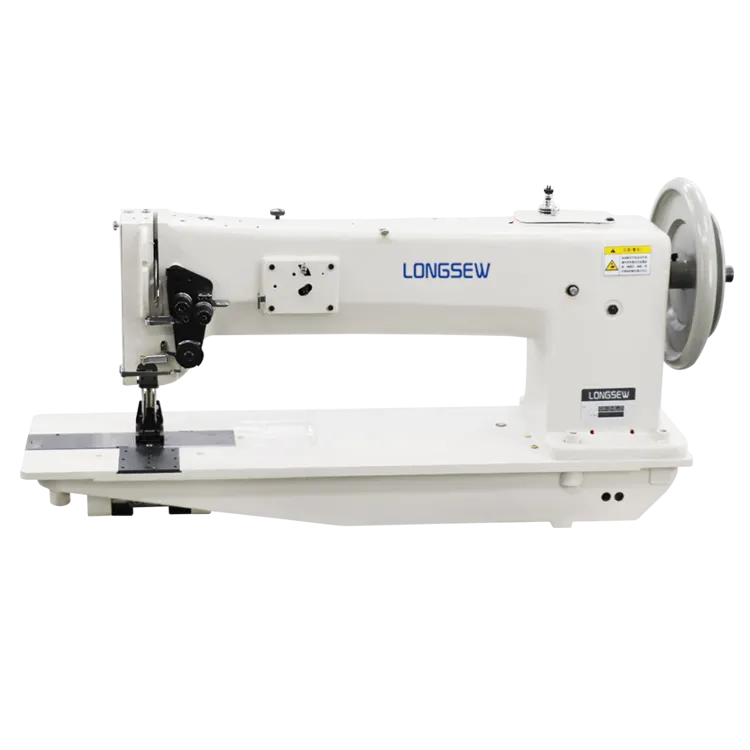Understanding the Functionality and Applications of Single Needle Lockstitch Sewing Machines in Tailoring
The Significance of Single Needle Lockstitch in Modern Sewing
The single needle lockstitch is a foundational stitch type that has revolutionized the world of sewing, both in industrial applications and home crafting. This stitch combines simplicity, reliability, and versatility, making it an essential technique in the textile industry. Understanding the mechanics and applications of the single needle lockstitch can provide insights into its enduring popularity.
Understanding the Single Needle Lockstitch
At its core, the single needle lockstitch involves a single needle and a bobbin. The needle penetrates the fabric and pulls thread from the upper spool, creating a loop that interlocks with a thread coming from the bobbin below. This interlocking mechanism produces a strong and secure stitch, pivotal for fabric seams. The lockstitch is characterized by its flat appearance on the top and a neat, less conspicuous stitch on the underside, making it ideal for both aesthetic and functional applications.
Advantages of the Single Needle Lockstitch
One of the most significant advantages of the single needle lockstitch is its strength. The interlocking nature of the stitch allows for a durable seam that can withstand tension and stress, which is vital in garment construction and various textile applications. This stitch type is well-suited for a wide range of fabrics, from delicate silks to robust denims.
Another notable feature of the single needle lockstitch is its versatility. It can be used not only for basic seams in clothing but also for decorative stitching, hems, and even quilt making. This adaptability makes it a favorite among both professional and hobbyist sewists.
The ease of control with a single needle lockstitch sewing machine allows for precise stitching, which is crucial in high-quality garment production
. Sewists can achieve intricate work with consistent results, ensuring that the finished product meets both design and durability standards.single needle lockstitch

Applications in Fashion and Industry
In the fashion industry, the single needle lockstitch is invaluable in constructing garments that require high precision and durability. High-end designer brands often utilize this stitch for its clean finish and strong construction. Additionally, the lockstitch is a standard in the production of uniforms, workwear, and activewear, where longevity and wear resistance are paramount.
Beyond fashion, the single needle lockstitch finds its place in various sectors. For example, it is commonly used in upholstery, automotive interiors, and even in medical textiles. Its ability to create sturdy seams under various conditions translates well across numerous applications.
The Future of Single Needle Lockstitch
As technology advances, the machinery facilitating the single needle lockstitch continues to evolve. Modern sewing machines equipped with computerized systems enhance precision and allow for a greater variety of stitching patterns. While automation in the sewing industry rises, the fundamental principles of the single needle lockstitch remain unchanged, emphasizing its timelessness and reliability.
In a world increasingly focused on sustainability and ethical fashion, the single needle lockstitch can also play a role. Its durability aligns well with the movement towards higher-quality clothing that endures over time, reducing waste in the long run.
Conclusion
The single needle lockstitch is a fundamental element of the sewing world, combining strength, versatility, and elegance. Its prominent role in various industries—from fashion to upholstery—reflects its adaptability and enduring relevance. As we move forward, the single needle lockstitch remains a staple in both traditional and modern sewing techniques, celebrating a legacy of craftsmanship and innovation. Whether for professional use or personal projects, mastering this stitch is a valuable asset for any sewist.
-
Industrial Cylinder Arm Sewing Machine: Revolutionizing Heavy-Duty SewingNewsJul.28,2025
-
Cylinder Arm Sewing Machine: Perfect for Special Sewing ApplicationsNewsJul.28,2025
-
Cylinder Bed Sewing Machine: Essential for Sewing Complex MaterialsNewsJul.28,2025
-
Heavy Duty Sewing Machine: The Essential Tool for Industrial ApplicationsNewsJul.28,2025
-
Computerized Pattern Sewing Machine: Revolutionizing Precision StitchingNewsJul.28,2025
-
Heavy Duty Industrial Sewing Machine: Power Meets PrecisionNewsJul.28,2025
-
Leather Sewing Machine: The Industrial Standard for Tough MaterialsNewsJul.18,2025





























